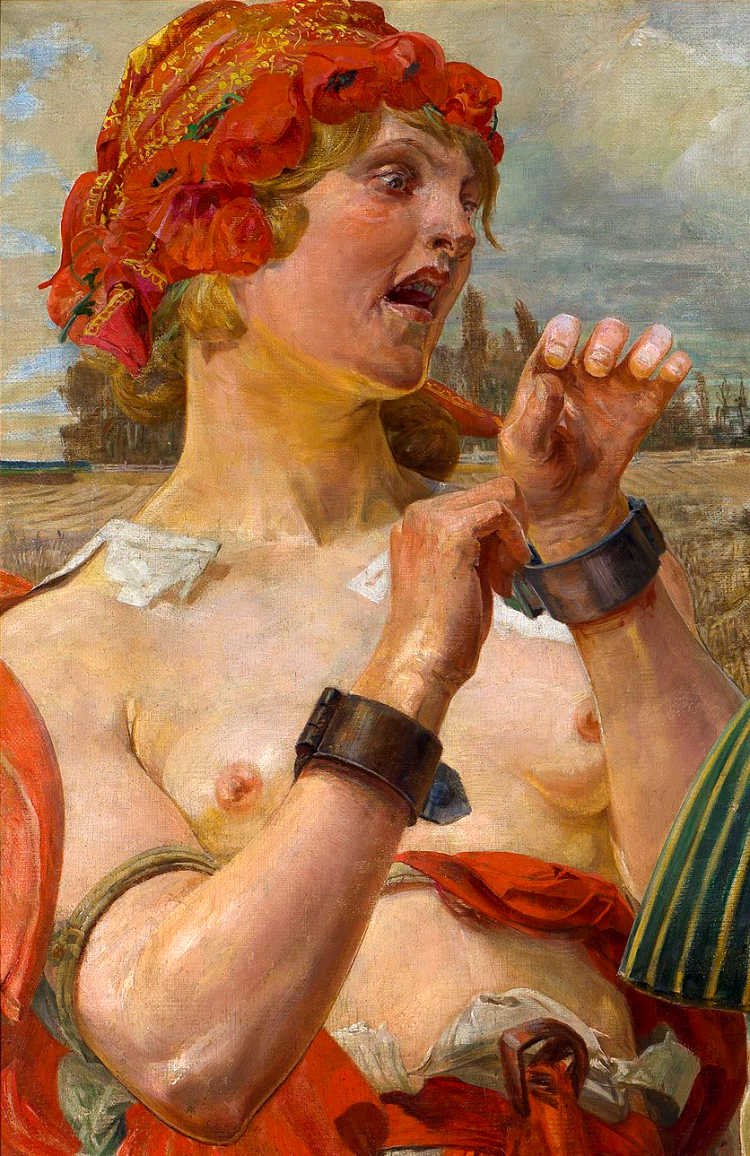 |
| Pomocnik Charona, 1911. |
 |
| "Moses", unknown model, 1904. |
 |
| Self-portrait, 1908. |
 |
| Feliks Jasieński, 1903. |
 |
| Władysław Żeleński, 1908. |
 |
| Tadeusz Błotnicki with Medusa, 1902. |
 |
| Leon Wyczólkowski, circa 1895. |
 |
| "Polish Hamlet", portrait of Aleksander Wielopolski, 1903. |
 |
| Tadeusz Błotnicki, 1901-2. |
 |
| Jerzy Mycielski with a Muse, 1903. |
 |
| Erazm Baracz, 1907. |
 |
| Wactawa Karczewski, 1906. |
 |
| Wladyslaw Reymont, 1905. |
 |
| Feliks Jasieński, 1903. |
 |
| "A Lark", portrait of Antoni Zembaczyński, 1902. |
 |
| "Young Poland", unknown model, 1917. |
 |
| Self-portrait, 1914. |
*
Jacek Malczewski (15 July 1854, Radom, Congress Poland – 8 October 1929, Kraków), Polish artist, associated with the patriotic Young Poland movement, and one of Poland's most revered painters. Regarded as the father of Polish Symbolism, his work combined the historical motifs of Polish martyrdom and its romantic ideals of independence, Christian and Greek mythology, folk tales, as well as his love of the natural world. Born while Poland was under occupation of the Russian Empire, he was greatly influenced by his father Julian, a Polish patriot and social activist who introduced him to the romantic literature inspired by the November Uprising. On his mother's side, he was related to the Szymanowski family. He moved to Kraków at the age of seventeen, beginning his artistic education in 1872, and the following year enrolling at the Academy of Fine Arts. In 1876 he went to Paris and studied for a year at the
École des Beaux-Arts, in the studio of Henri Lehmann. He next moved to the
Académie Suisse, returning to Poland to complete his studies in 1879. Between 1885 and 1916, he regularly visited Paris, Munich, Vienna, and made several trips to Italy, Greece, and Turkey. He drew his inspiration from a wide variety of sources often exotic or biblical, and translated them back into Polish folklore, its tradition and motifs, in his own painting. Many of his paintings prominently feature self-portraits in elaborate costume, a trademark of his style, often displaying a self-mocking humor. He married Maria
née Garlewska and they had two children, Julia and Rafał, the latter also a well-known painter. In 1897–1900 and 1912–1921 Malczewski served as professor and later Rector of the Academy of Fine Arts in Kraków. Having lost his sight in his last years, he died at the age of seventy-five and was buried at Skałka, Poland's national Panthéon.
 |
| Self-portrait, 1925. |




























No comments:
Post a Comment